15.2.2012 | 16:33
Calculating monthly average temperatures in Iceland – part 2
The monthly diurnal temperature range can be defined in at least two senses; (1) as the difference between the average daily maxima and minima, and (2) as the difference between the highest average fixed hour mean (FHM) and the lowest such mean.
In low and middle latitudes the sun more or less fixes the diurnal temperature cycle, the 24-hr maximum usually occurs in the early afternoon, 1 to 3 hours after local noon and the minimum at sunrise. Sea breeze, state of ground etc. can modify this general rule.
At high latitudes, as in Iceland, the noon sun remains below 15° from about 20 October to 20 February. In the southern part of the country the feeble influence of the sun can be seen in long-term averages during the greater part of the low sun period, but in the north the influence is entirely absent in December and most of January. So - the diurnal range in the second sense above (2) is very small during winter in Iceland.
Synoptic disturbances, however, cause large fluctuations in day-to-day temperatures so the diurnal range in the first sense (1) remains considerable. The synoptic scale variability does not know about the time of day, the daily maxima and minima can occur at any time during a 24-hr period. They are not confined to the hours after local noon.
The first figure (below) shows the fixed hour diurnal variation (2) at the automatic station at Ţingvellir in the Southwestern interior of Iceland during January and June (15 years of data).
Fig. 1
The red trace shows the range in June, the blue is January. These are relative means, the 24-hr average is set to 0°C. We can see that in June the maximum occurs about 1-2 hours after local noon (13:30z) [utc is used in Iceland during the whole year] and the minimum around sunrise (03:00utc - midnight at 01:30) in June. The daily range in sense (2) is 7.1°C in June.
In January the highest fixed hour mean occurs at 14 utc, so the sun clearly has some influence on the thermometer (probably more than on the air because of the setup of the sensor). The diurnal range (2) is just 0.9°C in January.
The diurnal range in sense (1) is, however, 7.5°C in January and 10.2°C in June at Ţingvellir (see figure 3 for the annual cycle of (1)).
We will also take a look at another station, for contrast. This is the station Seley, situated on a small and low island off the East coast of Iceland. This station has the smallest diurnal temperature range (2) in the country and also the smallest annual range (expressed as the average difference between the warmest and coldest month). The graph is plotted using the same range as the Ţingvellir plot for comparison.
Fig. 2
In January the daily range (2) is 0.1°C and in June it is only 1.0°C, January entirely flat and June nearly so. The diurnal range (1) at this station is 3.8°C in January and 3.2°C in June.
Fig 3
The seasonal variation of the two senses of the diurnal cycle at Ţingvellir (W-Iceland inland). The difference between average daily maximum (tx) and minimum (tn) remains at 8 to 10°C the whole year (1), but the difference between the highest and lowest fixed hour means shows a much larger seasonal variation.
Fig. 4
The ratio of the two diurnal senses (2)/(1) shows the "persistence" of the diurnal cycle throughout the year for Ţingvellir (blue) and Seley (red). At Ţingvellir the daily solar cycle (2) dominates in summer but the synoptic daily variability (1) dominates in winter. At Seley the solar (2) diurnal cycle is small throughout the year so the synoptic disturbances dominate also in the summer.
As mentioned in an earlier post in this series, there is no universal agreement on the definition of the monthly mean temperature. In Iceland, combinations of fixed hour means that are supposed to approximate the full 24-hour mean have been used since the DMI took over the observations in 1873 and were continued after the establishment of the IMO in 1920. During the early and middle periods there was no universal (that is, for Iceland) formula in use. The Hovmöller reform (see an earlier post) that has been in effect since 1956 amended this state of affairs.
The next post will include a comparison of a few formulas that have been used in the calculation of monthly temperature means. These two stations will be used as examples.
Note: Icelandic mean time is = utc = z = GMT during the whole year.
Um bloggiđ
Iceland Weather blog
Nýjustu fćrslur
- Unusually high temperatures
- Unusually high sea level pressure
- Sea level pressure: Unusually low in Iceland this winter
- A new national maximum temperature record for December
- A new sea level pressure record for June in Iceland
- An unusually warm April in Iceland
- A new October high pressure record in Iceland
- A new absolute September maximum temperature record in Iceland
Heimsóknir
Flettingar
- Í dag (13.7.): 1
- Sl. sólarhring: 1
- Sl. viku: 3
- Frá upphafi: 10782
Annađ
- Innlit í dag: 1
- Innlit sl. viku: 3
- Gestir í dag: 1
- IP-tölur í dag: 1
Uppfćrt á 3 mín. fresti.
Skýringar
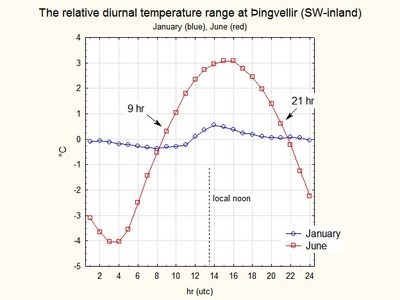
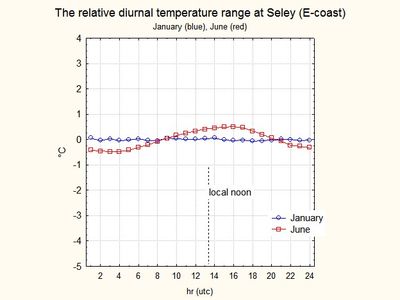



 hoskibui
hoskibui
 svatli
svatli
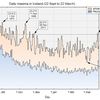
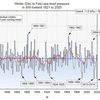
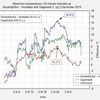
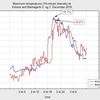
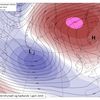
Bćta viđ athugasemd [Innskráning]
Ekki er lengur hćgt ađ skrifa athugasemdir viđ fćrsluna, ţar sem tímamörk á athugasemdir eru liđin.